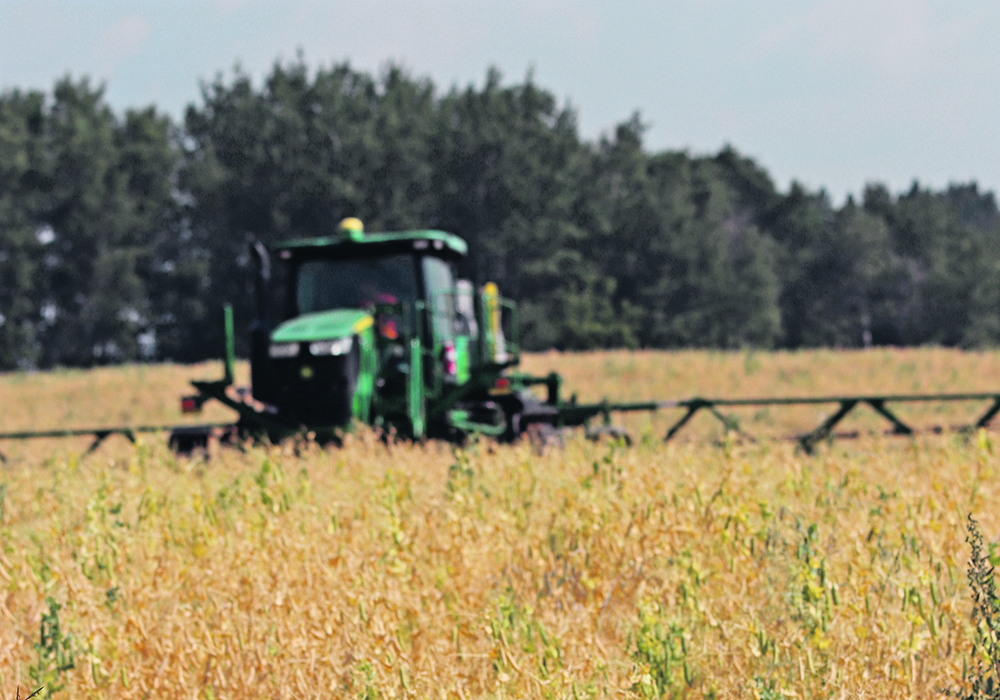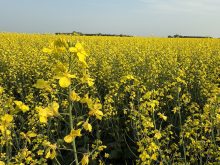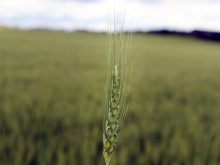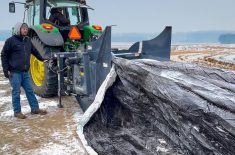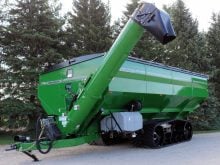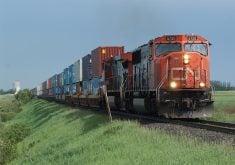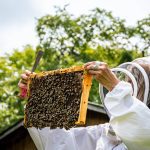Contaminants in grain not only lower your price on that load, it can also have a negative impact on future buyers and end users. The solution? Keep it Clean.
Started by the Canola Council of Canada in 2016, the Keep it Clean program has been at the forefront of promoting hygiene in grain shipments, whether to domestic or international markets.
The rationale behind Keep it Clean is simple: money. Delivering any grain that tests outside known parameters can cause anything from a financial penalty to rejection of the whole load.
Read Also

CNH launches photo feature to identify parts
Owners of CNH tractors looking for a replacement part can take a photo of the part and upload that photo to a website, which will then identify it and find the necessary replacement.
What seemed like a good idea in 2016 caught on and attracted new partners. Today, the main partners are Canola Council of Canada, Barley Council of Canada, Cereals Canada, the Prairie Oat Growers Association, Pulse Canada, Canadian Agricultural Partnership and the federal government.
In August, Keep it Clean hosted a webinar titled Pre-harvest Tips and Tools. Presenters included Cereals Canada director of crop protection Krista Zuzak, Pulse Canada director of crop protection Greg Bartley and Canola Council of Canada agronomy specialist Ian Epp.
Zuzak said the Canadian ag sector has a problem: some nations to which we export are losing confidence in our science-based approach. Instead, importers are placing more weight on political factors and social pressures.
“Look at the EU Farm to Fork strategy which includes a reduction in pesticides. Look at Mexico where a presidential decree moved the country closer to banning GM corn and glyphosate,” Zuzak said.
“Obviously, the new criteria in food importing countries applies to countries they buy from, such as Canada.
Canada’s ag industry can deal with the issue in a proactive manner and a reactive manner.
“On the reactive side, we’re monitoring policies and regulations in our export markets, and working closely with CFIA (Canadian Food Inspection Agency) and PMRA (Pest Management Regulatory Agency) to address market access issues,” she said.
“However, we prefer to stay on the proactive side as much as possible. That means more advocacy and a more science-based approach to policy and decision making, both domestically and in export markets. So we have a few avenues to explore with value chain organizations and industry partners.”
This means working with free-trade agreements that ensure there’s language covering science-based policy especially in areas such as maximum residue limits on crop protection products. A lot of these matters go through the World Trade Organization.
The Keep it Clean program promotes on-farm best management practices that focus on meeting standards for domestic and export buyers. These practices have boiled down to five simple measures:
1) Only use acceptable pesticides. A product registered for use in Canada may not be acceptable in the export market.
2) Read and follow the label. This is especially relevant at harvest time when a grower must be careful what they’re applying, the rate and the pre-harvest interval. This is important for later applied products or insecticides.
“It’s especially concerning with pre-harvest glyphosate,” Zuzak said. “We really want to make sure we’re not cutting closer than we should into that pre-harvest interval.”
3) Manage disease pressures. Grow disease-resistant varieties. Plan crop rotations to manage disease, especially those that overwinter successfully or thrive in stubble. Use seed treatments when you have higher-risk conditions.
4) Store your crop properly. Only use approved bin treatments, such as diatomaceous earth on cereals. If you use malathion when cleaning bins, keep in mind which bins will contain canola. Once they’re cleaned and ready for grain, keep the bins cool and well-ventilated.
5) Deliver what you declare. The Declaration of Eligibility is a legally binding document. Incorrect information, whether it’s intentional or accidental, can be traced back to the farm. Individuals can be held liable for costs associated with contamination of a bin or shipment. The declaration asserts that your crop is the variety and or class you have designated and it was not treated with the crop input products specified in the declaration.
One area of particular note is glyphosate, which should only be used for weed control, never as a desiccant.
“Applying glyphosate as a desiccant would be considered an off-label use,” Zuzak said. “This is something that would have serious legal consequences and market access issues.”
To counter criticism of the use of glyphosate in Canadian agriculture, Keep it Clean has created its Pre-Harvest Glyphosate Staging Guide, available at keepitclean.ca together with a supporting video.
The guide includes crop-specific information for canola, cereals and pulses, as well as general information on glyphosate.
“Something we’ve added to the staging guide is regrowth and late tillering,” Zuzak said. “A few years ago, we saw some late tillering as a result of weather conditions. This can impact the grain moisture assessment when you’re trying to assess that least mature part of your field.”
One key risk to manage is to never harvest earlier than recommended to ensure residues don’t contaminate a harvest. Glyphosate poses the biggest risk.
To help farmers determine when it’s safe to head into the fields, the Pre-Harvest Interval calculator is available online at keepitclean.ca/pre-harvest-interval-calculator. Pre-Harvest Interval is the number of days that need to pass between applying a crop protection product and cutting that crop, whether by swathing or straight cutting.
On the pulse crops side, Greg Bartley zeroed in on the annual Product Advisory.
“Every year, I get questions on the safety of specific products. I want to highlight that if you don’t see the product listed on the advisory, that means there’s no major market risk. We review all the products every year, so if there is a risk it will be in the advisory. This doesn’t tell you which product is best to use. It just gives an indication if there’s a marketing risk.
“The PMRA has proposed cancelling all outdoor uses of chlorothalonil. This is especially concerning for chickpea and lentil growers. The concern is the potential loss of a really important product that fits into an overall fungicide plan. We expect to see a final decision in the fall.”
Bartley reminded growers of the 30 percent moisture threshold when considering pre-harvest glyphosate. Growers must calculate the legality based on moisture below 30 percent in the areas with least mature crop.
“We’re not walking around with moisture meters, so we’re usually looking for visual characteristics in the plant. We can provide a bit of guidance with the Pre-Harvest Glyphosate Staging Guide.”
The guide uses full-colour images depicting stages of late-season maturity in the 10 most commonly grown crops on the Prairies.
“Again, that 30 percent guide is absolutely critical,” Bartley said.
Ian Epp of the Canola Council of Canada said glyphosate is a central tool, but it is under much scrutiny.
“In canola, a field that’s below 30 percent moisture will show 50 to 60 percent colour change. That’s where they need to be, 50 to 60 percent. Check the Pre-Harvest Glyphosate Staging Guide.”
Epp also said that blackleg can easily rob five or six bushels, and up to 10 bu. per acre in some fields he has scouted in the past couple of years.
“It creeps up on us. We have the tools to deal with the disease, we just need to identify it in the field. And then you need a plan. At this point, we’re planning for next year.”
He recommended pulling at least 50 plants when looking for blackleg and sample throughout the field, then rate the infestation.
“This is really important variety information,” Epp said. “Pulling plants is nuts and bolts practical for your rating. How well did it do for blackleg? Should we be looking at switching varieties next time?
Simple tips for blackleg control are familiar: making sure there are two years between canola crops on any field and aggressively control volunteers in the non-canola years.
“Rotation is the biggest enemy of blackleg,” Epp said. “Put an extra emphasis on clean fields between canola crops.”
For insect pests, he said there are a lot of crop protection products available and some overlap. He again recommended using the Pre-Harvest Interval Calculator to get a clear idea of when to proceed for a residue-free harvest.
“Across all commodities, we’ve had issues with grasshoppers in the southern areas of the Prairies. We’re getting calls about lygus bugs,” he said. “We see (pre-harvest interval) ranging from one day all the way to 21 days.”
Sudden infestations can be challenging and Epp said some farmers keep a supply of insecticides handy so they can immediately combat pests within rapidly shrinking application windows.
“Sometimes insects just come out of the blue. You’ve got no insects, and then out of the blue you’ve got a million grasshoppers demolishing your crop. Your knee-jerk reaction is to spray right now.”
Turning to cereals, Zuzak said the traditional thumbnail method is effective in determining timing of a glyphosate pre-harvest pass. When you press your nail into a grain kernel and the imprint comes back, the crop has too much moisture. If the indent remains, it’s ready for pre-harvest application.
“We want to stage off the least mature area of the field, not the field average spots,” she said. “Look at that stem just below the head. We don’t want to see green. A mature plant shows no green there.
“Your next test in the field is to use your hand out thresh out some of those heads. Now use that thumbnail test to check the kernels. Something you want is check with your grain buyer about your contract obligations and your acceptance if you’re using it for malt or for food and feed barley.”
The aim is to reduce the risk of a load being downgraded or rejected. She reminded farmers that once the cereal crop is below 30 percent, the PHI kicks in when the application is completed.
Uneven crops are always harder to manage. An uneven stand is a challenge for the whole growing season, right up to harvest.
“How do you stage it? The question is, where’s the bulk of the yield and profit coming from?” Epp said. “From an economic perspective, you can use that as your guiding tool? That’s where the majority of the yield is, so that’s where I’ve got to manage, even if the majority of the yield is maybe at the right stage.”
Preventing uneven stands is the first step and one thing producers can address is residue management right now, at harvest.
“How are you spreading your straw? If you haven’t checked the straw chopper, now is the time, because that will make it much easier come seeding,” Epp said.


